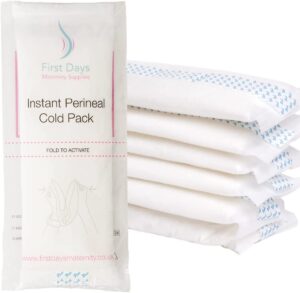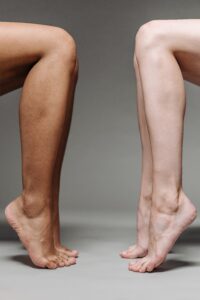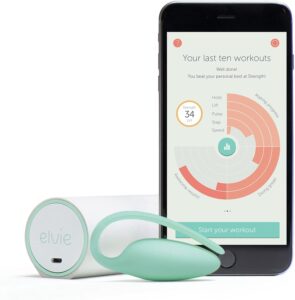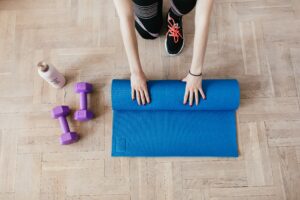A vacuum delivery (or ventouse) is when a suction cup is attached to the babies head and with help from the mothers contraction the healthcare practitioner will help to pull the baby out using the cup. Forceps deliveries are more common than vacuum as they are thought to be safer for the baby. The advantage of the ventouse cup over forceps relates to it being associated with significantly less maternal trauma and requiring less analgesia.
Complications associated with a vacuum assisted delivery:
- Perineal pain
-
A tear may occur or an episiotomy may be used with this type of delivery (see episiotomy section also for more details)
-
Vaginal / pelvic Prolapse
-
Urinary or faecal incontinence
-
Tears. A tear of grade 3 and above are thought to affect 8 to 12 in every 100 women having a forceps delivery.
-
Pain around the perineum
-
Pelvic floor weakness / tear
-
After an assisted birth, there’s a higher chance of blood clots forming in the veins in your legs or pelvis.
-
Postnatal depression
Here is what the evidence says about the treatment options for the symptoms associated with a vacuum assisted delivery:
Perineal Pain:
Kegel exercises – evidence is good for the use of this type of exercise before and immediately after birth. Studies have shown that they can help with urinary incontinence as well as pain and recovery speed after birth. Here is a great video explaining how to do Kegel exercises.
Cold therapy – We know that cold can help to reduce pain and inflammation. Do not do this more than three times a day however, as this can reduce blood flow to the area and slow healing. You could use ice wrapped in a towel or you can buy specific cold packs for perineum pain like these that stick into your underwear and can be used at any time as they do not need to be frozen to activate the cooling effect:

Doughnut cushions – a lot of studies have been carried out in order to check the effects of doughnut cushions on pressure relief. The studies are always in their favour, so if pain is your main issue then something like this might help to take some of the pressure off the affected area. Various types of cushions are on the market, have a look at our Top 5 pressure relief cushions HERE.

Heat – warm baths have been recommended to encourage healing following tears / cuts in this area. Heat demonstrated therapeutic benefit for both analgesia and promoting healing in certain injuries. Wait until 24 hours after you have given birth to take a bath and make sure that the bathtub is cleaned with a disinfectant before every bath.

Sitz Bath – A Sitz bath is where one sits in water that covers your vulvar area a few times a day to help with pain and healing. It isn’t easy finding evidence for it’s effectiveness but it’s there if you dig deep enough. This older study compared cold and hot Sitz baths for relief of postpartum perineum pain and found that cold Sitz baths were significantly more effective in relieving perineal pain and can help with keeping the area clean. You can buy a collapsible Sitz bath with great reviews HERE.
Lavender – This very recent study showed that the use of Lavender (in any form), following the birth of a baby, had a significant effect on pain relief and healing of episiotomy wounds. We would recommend using a lavender essential oil such as THIS one by Hebeso. This can be added to a bath for a heating effect also.
Position changes – While being active will help circulation and encourage healing, rest is also important during these early days of healing. A good position to rest in is lying down with your feet elevated above your heart to aid in circulation and reduce pressure to the perineum.
Prolapse:
Pelvic Floor Exercises – evidence suggests that pelvic floor exercises can be quite effective when treating pelvic prolapse symptoms. The largest most rigorous trial to date suggests that six months of supervised exercise has many benefits in terms of symptoms and changes in the anatomy. Here is a great video explaining how to do Kegel exercises.

Pessaries – are another option with pelvic floor prolapse but the evidence is a little mixed when it comes to their use. One recent study reported uncertainty as to whether pessaries improve pelvic organ prolapse symptoms for women compared with no treatment or pelvic floor exercises alone but did find that pessaries in addition to pelvic floor exercises probably improved women’s pelvic organ prolapse symptoms and prolapse‐specific quality of life. It is worth noting, however, that there may be an increased risk of adverse events with pessaries compared to exercises alone.
Incontinence / weakness in the pelvic floor muscles:
Pelvic Floor strengthening exercises – Many studies have shown the effectiveness in pelvic floor exercises when it comes to improving incontinence symptoms. THIS study found that pelvic floor training exercises could cure or improve symptoms of stress incontinence in particular but also were effective on all other types of urinary incontinence. They found that the exercises could reduce the number of leakage episodes and the quantity of leakage. THIS study also agreed that the pelvic floor training exercises worked well but they had added success when ‘biofeedback’ and vaginal cones were also used. Here is a link to a great video explaining how to do Kegel exercises.
Also, there is a brilliant app called Squeezy. This app shows you exactly how to do your pelvic floor exercises and for how long, tailored to each individual. Take a look at their website HERE for some really useful information on pelvic floor health.
Biofeedback – There is quite a lot of research into the effectiveness of biofeedback when it comes to conditions associated with a weak pelvic floor. THIS study concluded that, when comparing biofeedback to pelvic floor muscle training alone, the results were far superior using the feedback device. Biofeedback therapy builds on strength training by incorporating the use of equipment to record or amplify activities of the body and feed the information back to the patients. It can make doing pelvic floor exercises a little more fun / interesting and gives you a target and feedback on how much improvement there has been.
You should speak to your women’s health specialist Physiotherapist about using biofeedback devices to check if they think it is suitable for you and if it is the right time to start using one. They are available to buy online. THIS is a one we would recommend based on reviews.
Vaginal Cones – These are weighted toners which come in different sizes to help strengthen the pelvic floor muscles. They are designed to improve strength over a 12 week period, they’re easy to use and the ideal introduction to pelvic floor exercises. This study showed a better result when using biofeedback and toning cones, over just pelvic floor exercises on their own.
You can buy weighted cones / toners online HERE, they have excellent reviews. Always speak to your healthcare provider before using anything like this to check that it is the right time and course of treatment for you.
Bladder training – Bladder training is a way of teaching your bladder to hold more urine and aims to reduce the number of times you need to pass urine per day. The basic principle is that you hold off going to the toilet for increasing amounts of time, each time you feel you need to go (over the course of weeks or months). However, there has been little evidence found for the effectiveness of bladder training when it comes to urinary incontinence in post partum women. THIS study found that bladder training might be helpful but the trials reviewed were of variable quality and of small size.
Electrical stimulation – evidence suggests that nerve stimulation is effective in treating urge urinary incontinence. Nerve stimulation often involves surgical implantation of a device that sends a low-voltage electrical current to a nerve that controls the bladder and pelvic floor, speak to your healthcare provider about this treatment option.
Pessary – Studies have shown that long-term pessary use is a safe and effective option for patients with pelvic organ prolapse and stress urinary incontinence. THIS (more recent) study documented that vaginal pessaries provide an adequate control of stress urinary incontinence if they are fitted properly and managed by frequent replacements and regular check-ups. They concluded that the pessary should be considered among the first line of treatment for incontinence along with exercise.
Pilates – evidence does support the use of Pilates-based exercise during & after pregnancy for the treatment of many conditions including pelvic floor strength. Evidence has also shown that Pilates can also have a positive effect on the birth and the outcome following the birth. This study compared Pilates with standard pelvic floor exercises and concluded that the Pilates exercise program was as effective as conventional pelvic floor exercises in speeding up continence recovery and it also achieved a higher rate of fully continent patients in the short-term.
Also, this small-scale study looked into the use of Pilates based exercise in incontinence sufferers and reported some really positive results. Pilates includes the pelvic floor training and also aims to give the whole body a work out rather than just targeting one area (like in pelvic floor training).
Have a look at our Top 5 Online Pilates programmes here.
DVTs (blood clots):
Walking – Once you are up and moving after your birth then you want to stay as active as feels comfortable to you. Little and often is usually key to help with circulation and reduce any chances of a DVTs developing. THIS study found that mobilisation out of bed, with or without breathing exercises, within 2 hours after surgery improved arterial and peripheral oxygenation. This means quicker healing and less chances of complications (like DVTs).
Calf / ankle pump exercises – another exercise that is usually recommended after your operation is ‘calf or ankle pumping’. This involves moving your feet up and down or pointing your toes and then relaxing them. You can do these lying down, sitting up and standing up (holding onto a wall or table for support).

Exercises – While protocol suggests that we wait until our 6-week check up to get the go ahead for post-birth exercise, there are things that you can be doing in the first 6 weeks (and as early as 1 day post-op) that will help to aid your recovery and prevent blood clots (DVTs forming).
Have a look at this video by Today Parent. This shows really clearly how to do the exercises that are recommended straight after birth (speak to your midwife about these on your first follow-up appointment).
Postnatal depression:
While evidence suggests that the mode of delivery has no direct impact on risk of postpartum depression, it has been found that women delivering in an emergency setting by emergency caesarean section or vacuum extraction, and reporting negatively experienced delivery, constitute a high-risk group for postpartum depression.
HERE is what the NHS recommend to help with postnatal depression.
Symptoms to watch for following an assisted delivery (Vacuum / ventouse):
-
Red / swollen skin around the perineum that looks ‘angry’.
-
Persistent pain that isn’t easing.
-
A smell that isn’t usual for you and quite noticeable.
-
Pus or liquid coming from the cut.
Tell your GP, midwife or health visitor as soon as you can about any possible signs of infection, so they can make sure you get treatment.





